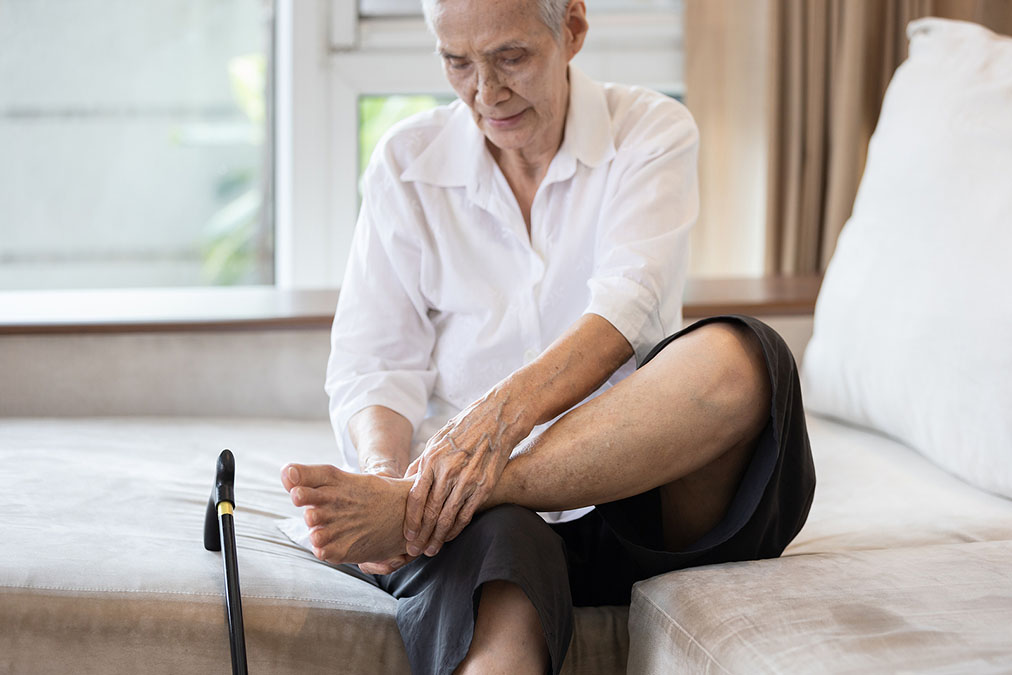 Diabetic neuropathy can be a challenging complication of diabetes, causing pain and affecting the quality of life for many patients.
Diabetic neuropathy can be a challenging complication of diabetes, causing pain and affecting the quality of life for many patients.
Most often the only treatment options are painkillers and other medications.
But a recent study in Diabetes Research and Clinical Practice put an interesting tech gadget to the test, with amazing results.
While using a spinal cord stimulator sounds complex and high-tech, it is actually easy to understand.
The treatment examined in this study is a 10 kHz spinal cord stimulator. It is a small device implanted in the body which sends out electrical impulses to intercept pain signals before they reach the brain.
The study included 216 adults, all of whom had been grappling with painful diabetic neuropathy for at least a year.
These individuals were divided into two groups: those treated with the spinal cord stimulator combined with conventional medical management, and those receiving conventional management alone.
After six months, participants who did not feel sufficient pain relief had the option to switch treatments. As a result, 142 patients tried the spinal cord stimulator.
Scientists checked the participants’ pain intensity, health-related quality of life, sleep, and neurological function via sensory, reflex, and motor tests.
Two years down the line, the outcomes were promising:
-
1. Participants who used the spinal cord stimulator experienced a whopping average pain reduction of almost 80%!
2. Over 90% of participants who tried the stimulator saw their pain levels reduced by half or more.
3. These participants reported notable improvements in their sleep quality and overall quality of life.
4. 65.7% of participants who tried the stimulator showed substantial neurological improvements. This finding is crucial as diabetic neuropathy can often lead to sensory loss in the feet, putting individuals at a higher risk of foot ulcers and even amputations.
These results are quite amazing as neuropathy usually gets worse instead of better over time.
There were however a couple of drawbacks:
-
1. Lots of people dropped out after six months. We can assume they did not benefit.
2. Around five percent experienced an infection from the implant. This is usually easily treatable but is still an issue.

 Overcoming IBD
Overcoming IBD Multiple Sclerosis
Multiple Sclerosis Banishing Bronchitis
Banishing Bronchitis Gum Disease Gone
Gum Disease Gone Overcoming Onychomycosis
Overcoming Onychomycosis Neuropathy No More
Neuropathy No More The Prostate Protocol
The Prostate Protocol Brain Booster
Brain Booster
 Ironbound
Ironbound
 Solution for Shingles
Solution for Shingles
 The Bone Density Solution
The Bone Density Solution
 The Ultimate Healing Protocol
The Ultimate Healing Protocol
 The Parkinson's Protocol
The Parkinson's Protocol
 The Chronic Kidney Disease Solution
The Chronic Kidney Disease Solution
 Overthrowing Anxiety
Overthrowing Anxiety The Fatty Liver Solution
The Fatty Liver Solution The Hypothyroidism Solution
The Hypothyroidism Solution
 The End of Gout
The End of Gout The Blood Pressure Program
The Blood Pressure Program
 The Oxigized Cholesterol Strategy
The Oxigized Cholesterol Strategy
 Stop Snoring And Sleep Apnea Program
Stop Snoring And Sleep Apnea Program
 The Arthritis Strategy
The Arthritis Strategy The Vertigo & Dizziness Program
The Vertigo & Dizziness Program The 3-Step Diabetes Strategy
The 3-Step Diabetes Strategy Hemorrhoids Healing Protocol
Hemorrhoids Healing Protocol The Erectile Dysfunction Master
The Erectile Dysfunction Master Weight Loss Breeze
Weight Loss Breeze The IBS Program
The IBS Program The Insomnia Program
The Insomnia Program The Migraine and Headache Program
The Migraine and Headache Program The Neck Pain Solution
The Neck Pain Solution The Menopause Solution
The Menopause Solution The Ejaculation Master
The Ejaculation Master The TMJ Solution
The TMJ Solution The Acid Reflux Solution
The Acid Reflux Solution The Fibromyalgia Solution
The Fibromyalgia Solution The Psoriasis Strategy
The Psoriasis Strategy